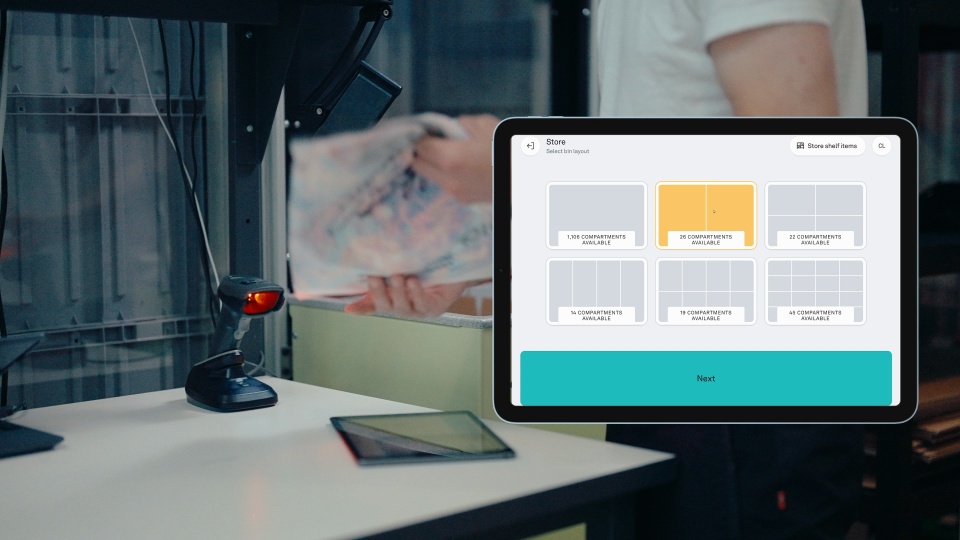NOTE: The information in this article is intended for internal partner training purposes only.
For external use, please refer to the approved materials provided to you — including our live, always up-to-date website, official sales collateral, or reach out to our BDM team for additional resources and demo support.
FM Loss Prevention Data Sheet 8-34 (also known as the ASRS “fire code” from FM) is made for larger systems and has up until now not taken into account the reduced risk profile of smaller ASRS systems.
The smallest of systems have required the application of similar design principles as very large systems, driving up significantly the total cost of ownership for the end customer.
Pio and AutoStore have worked closely with FM to ensure the reduced risk is taken into account in their widely used FM 8-34 datasheet for recommended ASRS fire protection.
What is changing
In early 2025 a memo from FM <remove link> was issued to Pio and Autostore addressing revised recommendation on fire protection for small systems. These new guidelines that relate to small ( <2000 sqft) systems will be incorporated into an official datasheet update expected in April 2026.
The memo is only available to Pio and Autostore currently but the Pio Deployment team can offer guidance for fire protection design based off of this coming change. FM representatives are also open for direct consulting on the specifics of these changes. This can allow for early incorporation of the new guidelines in fire protection designs ahead of the new FM datasheet update in April 2026.
The memo defines a small system as:
- Storage height does not exceed 8 ft (2.4 m), and;
- Storage area footprint ≤ 10,000 ft² (930 m²)
OR
- Storage height does not exceed 20 ft (6.1m), and;
- Storage area footprint ≤ 2,000 ft² (185 m²)
The first definition represents a design that is expected to be less common, but the latter implies that the new guidelines are relevant for the P-range up to and including the P400.
The new guidelines do not rely on sprinklers to achieve final extinguishment. Instead, final extinguishment is achieved by manual intervention, which in practice would be a plan for manual intervention. This means that for small systems (as per FM definition above), and in warehouses where sprinkler systems meet FM 8-34 table 45 requirements, the following items are no longer required:
- Elevated mezzanines as means of monitoring top of storage. A small observation deck or camera is sufficient, significantly reducing the cost for smaller system.
- VESDA (very early warning air aspirating smoke detection) is no longer a requirement. This implies that for most warehouses, the existing/typical spot detection will be sufficient.
- Water supply duration of 4 hours (new guideline requires 2 hours or more)
- Vertical Barriers to sub-divide 1000 sqft sections
- Monitor nozzles & infrared cameras
- Perimeter drainage channels
In addition, the P100 will not require a Robot holding area as it falls below the 500 sqft (44m2) threshold.
 What this means in terms of fire upgrade cost
What this means in terms of fire upgrade cost
Pio installed a P400 in 2024, before the FM memo was issued. The installation was greenfield in a recently built warehouse with a 40 foot ceiling height.
The total fire upgrade cost for the customer was estimated to USD 126,500.. This would be close to 30% of the upfront fee charged by Pio (excluding building modifications, shipping & customs).
The table below summarizes the fire upgrade costs required.
126,500
Applying the new guidelines from FM on this installation would eliminate need for mezzanine, fire detection and fire barriers, amounting to savings of USD 90,000, or close to 70% of the total fire upgrade bill.
In the case above, we were able to convince the local fire marshal to replace the Mezzanine with a fire observation deck, reducing the total fire upgrade cost to around USD 77,000 . With the new FM datasheet, mezzanine is no longer a recommendation and customers will not need to justify removing or risk having to install a traditional mezzanine.
What’s next
We keep working with FM and the AutoStore team to ensure guidelines and recommendations are consistent with the risk profile of smaller systems in smaller warehouses. Currently we are working towards the guidelines connected to the recommended sprinkler head temperature rating. An update or clearer guidance in this area could eliminate need for sprinkler head changes in many modern warehouses.
If you have questions about this article or fire guidelines for the P-range in general, contact:
- Pio Deployment Team – deployment@pio.com
About FM Global
Factory Mutual (FM) publishes the industry standard datasheet that informs the majority of fire protection designs for ASRS. The FM 8-34 datasheet is the most commonly used reference for the basis of these designs. There is no existing fire code for ASRS systems and so most regulatory bodies/AHJ’s and insurance companies look to FM for guidance on fire protection designs.
NOTE: The information in this article is intended for internal partner training purposes only.
For external use, please refer to the approved materials provided to you — including our live, always up-to-date website, official sales collateral, or reach out to our BDM team for additional resources and demo support.

